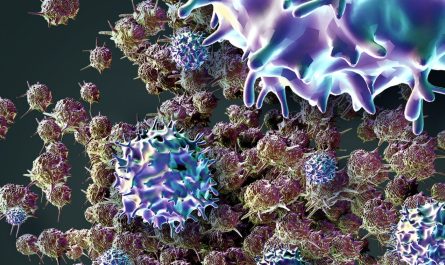Allergic Rhinitis Treatment: An Overview
Allergic rhinitis, commonly known as hay fever, is a chronic inflammatory disease affecting the nasal airways. According to the Asthma and Allergy Foundation of America, over 50 million Americans suffer from various forms of allergies including allergic rhinitis. While it is typically more of a nuisance than a serious health threat, untreated allergies can lead to other complications and impact quality of life. In this article, we explore the various treatment options available for managing symptoms of allergic rhinitis.
Causes and Symptoms
Allergic rhinitis develops when the immune system mistakenly identifies usually harmless substances like pollen, dust mites, mold spores and animal dander as threatening. This triggers the release of antibodies called immunoglobulin E (IgE) which leads to inflammation in the nasal linings. Common symptoms that arise due to this inflammatory response include sneezing, congestion, runny nose and itchy eyes and palate. Symptoms fluctuate depending on environmental exposure to allergens as well as other factors like pollen counts and weather conditions. The most common triggers are seasonal allergens like tree, grass and weed pollens which tend to cause symptoms from spring through fall. Indoor allergens such as dust mites and pet dander provoke year-round or perennial symptoms.
Medications for Relief
Over-the-counter oral antihistamines are widely used as first-line treatments to relieve sneezing, itching and other allergy symptoms. Common options include loratadine (Claritin), cetirizine (Zyrtec), levocetirizine (Xyzal), and fexofenadine (Allegra). These work by blocking the effects of histamine – the chemical messenger responsible for the inflammatory response. However, it may take a few days to experience full relief as these medications work best as preventives when taken daily during peak allergy seasons.
For more severe symptoms, prescription antihistamines may provide stronger relief. Options include fexofenadine (Allegra), desloratadine (Clarinex), azelastine (Astelin), and olopatadine (Patanase). Some prescription options have unique formulations suited for certain delivery methods. For example, azelastine and olopatadine nasal sprays target delivery directly to nasal tissues. These are ideally suited as a rescue treatment for fast relief from sudden allergy flare-ups.
Those experiencing significant nasal congestion may benefit from oral or topical decongestants. Pseudoephedrine (Sudafed) is an effective oral decongestant that works by constricting swollen nasal blood vessels. For temporary relief from stuffy nose, topical nasal decongestant sprays containing oxymetazoline (Afrin) can be used for a few days. Long-term use is discouraged due to rebound congestion. Saline nasal irrigation using a neti pot filled with salt water is also effective in flushing pollen and irritants from nasal passages.
Immunotherapy for Long-Term Control
While medications provide symptomatic relief, immunotherapy also known as allergy shots can actually modify the disease over the long-term. This involves administering gradually increasing doses of purified allergen extracts just underneath the skin. When administered over 3-5 years by a trained allergist, this classic form of immunotherapy induces protective antibodies that tamp down the allergic inflammation instead of triggering it. Studies have shown immunotherapy can prevent the development of new allergies and asthmas as well as providing protection lasting several years post-treatment. Sublingual or oral tablets containing standardized allergen extracts have become popular options for immunotherapy with better safety profiles than injections.
Surgical Options
In some severe cases, surgical procedures may be recommended for refractory or medication-dependent nasal allergies. The most common procedure is called a turbinate reduction where enlarged nasal tissues called inferior turbinates are surgically reduced to improve nasal airflow and decrease congestion. Endoscopic sinus surgery may also be considered for those with nasal polyps or recurrent sinus infections resistant to medical therapy. While these invasive options do not treat the underlying allergic etiology, they may improve overall quality of life for those suffering from very bothersome nasal symptoms. It is important to try aggressive medical therapy first before considering major sinus surgery.
Allergen Avoidance and Lifestyle Changes
While symptoms cannot always be prevented, identifying and avoiding exposure to specific allergens through dust mite-proof bedding, HEPA air filters, and limited indoor pets can lessen triggers. Other measures include showering/changing clothes after outdoor activities and using public transport during high pollen times. Saline irrigation and nasal rinses also effectively flush out nasal passages. Using over-the-counter eyedrops can soothe itchy eyes. Stress reduction, staying hydrated and getting adequate sleep may also help minimize allergic inflammation. Making lifestyle modifications along with appropriate medications offers the best approach to long-term control of allergic rhinitis.
With the wide selection of effective treatments now available, managing this chronic condition is very achievable and no longer requires simply suffering through symptoms. Understanding your triggers and working closely with an allergist allows customizing a prevention and treatment plan to minimize life impacts of hay fever and allergies. Taking a comprehensive approach addressing underlying inflammation as well as temporary symptom relief sets patients up for optimal control of their allergic rhinitis.
Note:
1. Source: Coherent Market Insights, Public sources, Desk research
2. We have leveraged AI tools to mine information and compile it



